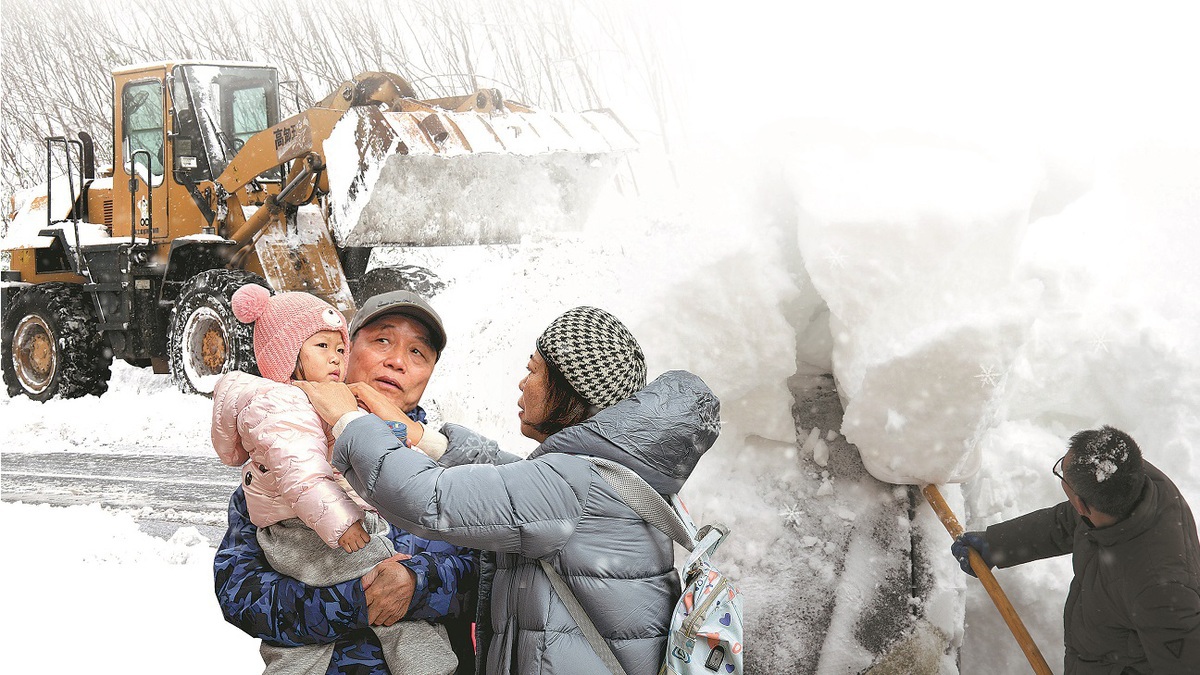Severe cold spell makes its presence felt, even in tropical Hainan


Late last month, temperatures fell significantly in many parts of China.
In Shandong province, snowfall created a picturesque landscape, with netizens likening it to scenes from the Arctic.
In southern provinces, netizens compared the power of the winter sun to the light inside a refrigerator, as these areas experienced temperatures colder than the interior of a fridge, which is typically 4 C.
In northern China, temperatures were consistently 5 C or more below the average for this time of year.
Yantai and Weihai cities in Shandong experienced a severe cold wave accompanied by heavy snowfall. Over a three-day period, the weather station in Yantai recorded snowfall of 28.6 millimeters, with a snow depth of 52 centimeters, which set records since meteorological documentation began in 1951.
Wendeng district in Weihai reported a snow depth of 74 cm, setting a provincial record.
Yang Chengfang, chief forecaster at the Shandong Meteorological Service, told Xinhua Daily Telegraph, "This blizzard is considered an extreme occurrence."
She added that the weather was unprecedented, with Wendeng setting records for daily snowfall on Dec 16, when 27.5 mm was recorded.
In some cities in the north of Shanxi province, the mercury plummeted to -30 C, with five places setting records for their lowest temperatures, the provincial climate center said.
Even in tropical Hainan province, an orange warning for cold air, the second-highest level, was issued on Dec 21, signaling that temperatures in northern parts of the island would fall below 10 C.
From Dec 12 onward, the China Meteorological Administration issued yellow warnings for freezing conditions — the third-highest warning on the four-tier system. Such extreme conditions have been rare in recent years, with the last such warning issued a decade ago.
The National Climate Centre said that before that time, the average national temperature was higher than usual.
However, the recent cold wave caused a sudden drop in temperatures across most of the country. These falls, which set records at some meteorological stations, were attributed to a prolonged and extensive cold wave with complex weather patterns and significant accumulated precipitation.
Against the backdrop of global warming, the Arctic region is hotting up at a rate two to three times faster than the global average. This contributes to a reduced temperature difference between the Arctic and mid-latitudes, allowing cold air from the Arctic to move south more easily.
This frigid air, which is much colder than that in mid-latitudes, has resulted in many areas of China experiencing exceptionally cold weather, the center said.
Data show that during El Nino periods, China's winter temperatures generally tend to be higher. However, there has been a noticeable frequency of episodes of cold air, highlighting distinct fluctuations between warm and cold spells, it added.
- Enhanced trust can spur ties, defense chief tells US
- Supreme beauty that creates connections, bridges culture
- Shenzhou XXI crew begins space mission
- Shenzhou XXI astronauts enter space station
- China's Shenzhou XXI crewed spaceship docks with space station combination
- Annual report on rule of law in China released



































